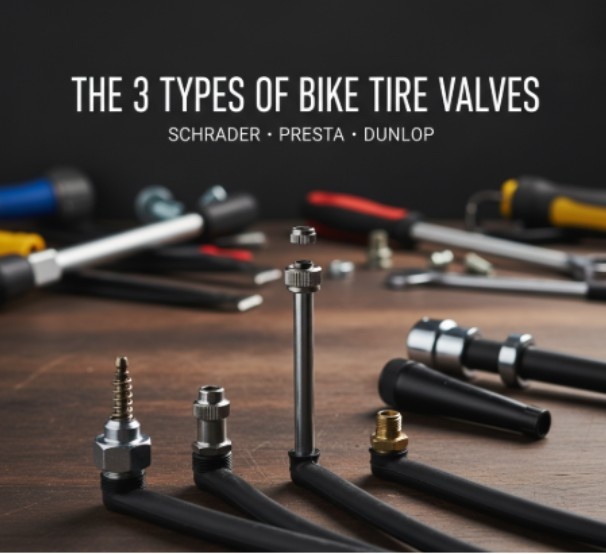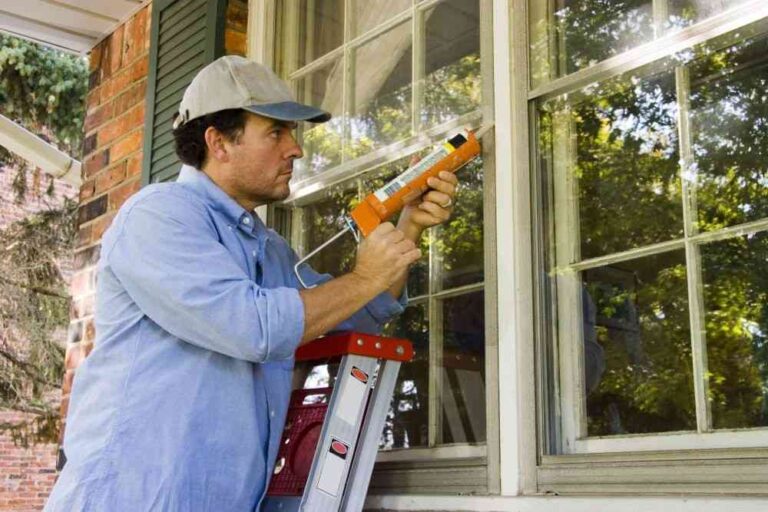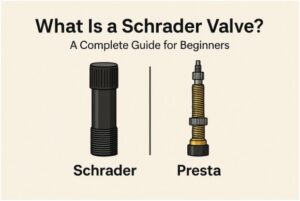I still remember the first time I tried pumping air into a sleek road bike after years of working on dirt bikes and cars.
I pushed my pump onto the valve like I always did—pssst—air hissed out, and nothing went in. That was the day I learned there’s more than one way to seal air into a tire.
Since then, I’ve handled every kind of valve you can imagine, and understanding the types of bike tire valves has saved me from countless mid-ride headaches.
If you’ve ever wondered why your pump doesn’t fit or your tire keeps losing air, this guide will clear things up.
I’ll walk you through the three main valve types, how to use them, and how to tell which one belongs on your bike.
What Are the Main Types of Bike Tire Valves?

There are three main types of bike tire valves: the Schrader valve, the Presta valve, and the Dunlop valve.
Each one has its own personality—almost like three different mechanics in the same shop.
The Schrader valve is the sturdy, no-nonsense one. It’s the same kind of valve you find on car tires.
The Presta valve is the slim precision tool, built for high-performance bikes.
And the Dunlop valve is the under-the-radar type, common on city bikes in Europe and Asia but rarely seen elsewhere.
Knowing which valve you’re working with changes everything: the pump you need, the pressure you can run, and how careful you need to be while handling it.
How Do Schrader Valves Work?
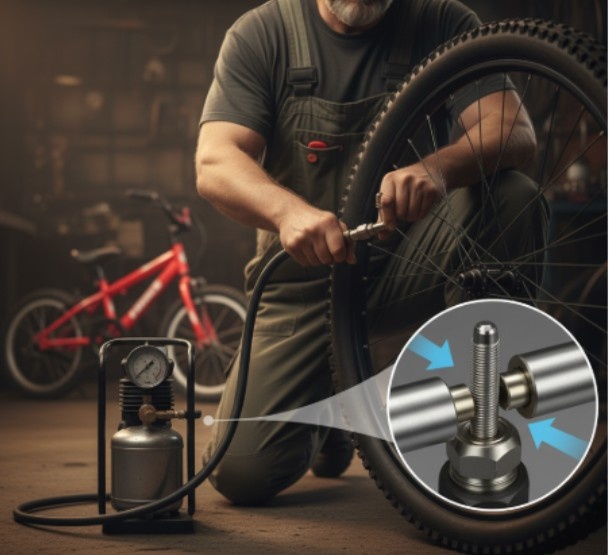
When I see a Schrader valve, I feel at home. They’ve been around forever, and they’re built tough. You’ll spot them on kids’ bikes, mountain bikes, and most recreational rides.
A Schrader valve has a wide metal stem and a spring-loaded pin in the center. That pin opens when you push a pump head or air compressor onto it. The design is simple and forgiving—great for anyone new to bike maintenance.
One of the best things about Schrader valves is convenience. You can inflate them at almost any gas station, and most modern pumps come with a Schrader-compatible head.
They’re also incredibly durable. I’ve dropped wheels, banged rims, and these valves just keep on holding air.
The trade-off is that their wide stems need larger rim holes, which can slightly weaken the wheel on lightweight road bikes. That’s why you rarely see Schrader valves on high-end performance bikes.
Why Do Road Bikes Use Presta Valves?
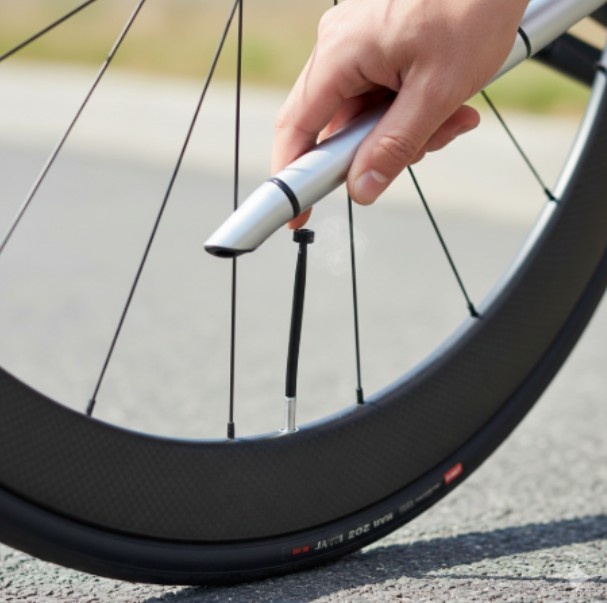
If the Schrader is the mechanic’s workhorse, the Presta valve is the surgeon’s scalpel. It’s long, narrow, and precise—made for high pressure and tight tolerances.
Presta valves show up on road bikes, gravel bikes, and most high-end mountain bikes. Their slim design only needs a small rim hole, which helps maintain rim strength when you’re running skinny tires at high pressures. That’s crucial when you’re pushing 100+ psi on a smooth road surface.
To use a Presta valve, you unscrew the tiny locknut at the top. This opens the valve. Then you can attach your pump and add air.
After inflating, you tighten the locknut again to seal it. The design gives excellent air retention, but it also makes the valve more delicate. I’ve seen plenty bent or snapped by riders rushing their pump on at an awkward angle.
If you’re switching to Presta, make sure you have a Presta-compatible pump or a small adapter that lets you use a Schrader-style pump. Otherwise, you’ll just be standing there, sweating, wondering why no air is going in.
What’s Different About Dunlop Valves?
The Dunlop valve—also called the Woods or English valve—is like the quiet cousin who shows up only at family reunions.
You won’t see it much in North America, but it’s still common on city and utility bikes in Europe and Asia.
A Dunlop valve looks a bit like a Presta but with a wider base and a different internal mechanism.
It works as a one-way valve, meaning air goes in but won’t come out just by pressing it. To deflate the tire, you need to loosen or remove the retaining nut at the top.
I’ve worked on a few bikes with Dunlop valves, and they’re pretty reliable once you get the hang of them. The tricky part is finding a pump that fits.
Some modern pumps have adapters, but if you’re traveling, check ahead—otherwise, you’ll be stuck hunting for a shop that can help.
How Can You Tell Which Valve You Have?
This part is easy once you know what to look for. Here’s a quick comparison I’ve used to teach new mechanics:
| Feature | Schrader Valve | Presta Valve | Dunlop Valve |
| Also Called | American / Car valve | French valve | Woods / English valve |
| Common Bikes | Kids, MTB, recreational | Road, gravel, high-end MTB | City and utility bikes (Europe/Asia) |
| Appearance | Short, wide, central pin | Long, thin, small locknut | Similar to Presta, wider base |
| Pump Needed | Schrader-compatible | Presta-compatible | Dunlop adapter or fitting |
| Pressure Handling | Low to medium | High | Medium |
| Durability | Very robust | Lightweight but delicate | Moderate |
Once you know the shape, you’ll never mistake them again.
How Do You Inflate the Different Types of Bike Tire Valves?
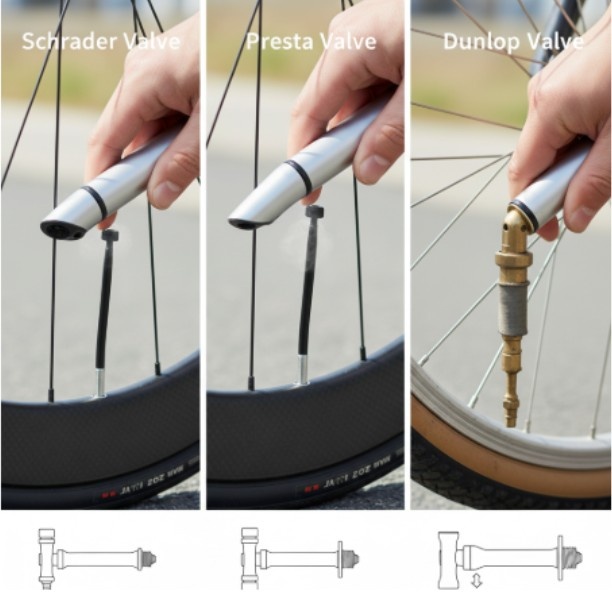
Let’s get practical here. If you’ve got a bike pump in your hand, here’s how to handle each valve properly:
For Schrader valves
Push your pump head straight onto the valve until it clicks. The pump will push the pin down and open the valve. Start pumping, then remove the head quickly to avoid losing air.
For Presta valves
Unscrew the tiny locknut at the tip until it wiggles. Press it once to release a puff of air (that primes it).
Attach your Presta pump and inflate. When done, remove the pump carefully and tighten the locknut again.
For Dunlop valves
Make sure your pump has a Dunlop fitting or adapter. Fit the pump snugly onto the valve and inflate normally.
To release air, you’ll need to unscrew the top portion of the valve completely—pressing it won’t work.
Once you know how each valve behaves, inflating your tires becomes second nature.
FAQs About the Types of Bike Tire Valves
1. Why do road bikes use Presta valves instead of Schrader?
Presta valves handle higher pressures and require smaller rim holes, which keeps lightweight road rims stronger. They also seal better, which helps maintain consistent tire pressure for performance riding.
2. Can I convert from Schrader to Presta valves?
Yes, but you’ll need new tubes or tubeless valve stems designed for Presta, and your rims must have small enough holes. If your rim holes are too big, you can use small rubber grommets to adapt them.
3. Are Dunlop valves reliable for daily commuting?
They are. Dunlop valves hold air well and are simple to use once you’re familiar with them. The only challenge is pump compatibility, especially outside regions where they’re common.
4. Do I need a special pump for each valve type?
Many modern pumps come with dual heads or reversible fittings for both Schrader and Presta. For Dunlop, you may need a small adapter. Always check your pump before heading out.
Rolling Out With the Right Valve Knowledge
Knowing the types of bike tire valves might seem like a small detail, but trust me—it makes a big difference.
I’ve seen riders waste half an hour fighting with the wrong pump or damaging a delicate Presta because they forced it like a Schrader.
Once you understand how each valve works, you’ll spend less time messing with tools and more time actually riding.
And honestly, that’s the best part of bike maintenance—when your gear disappears and the ride takes over.
So next time you grab your pump, check your valve. Treat it right, and it’ll keep your wheels rolling smooth for years.

